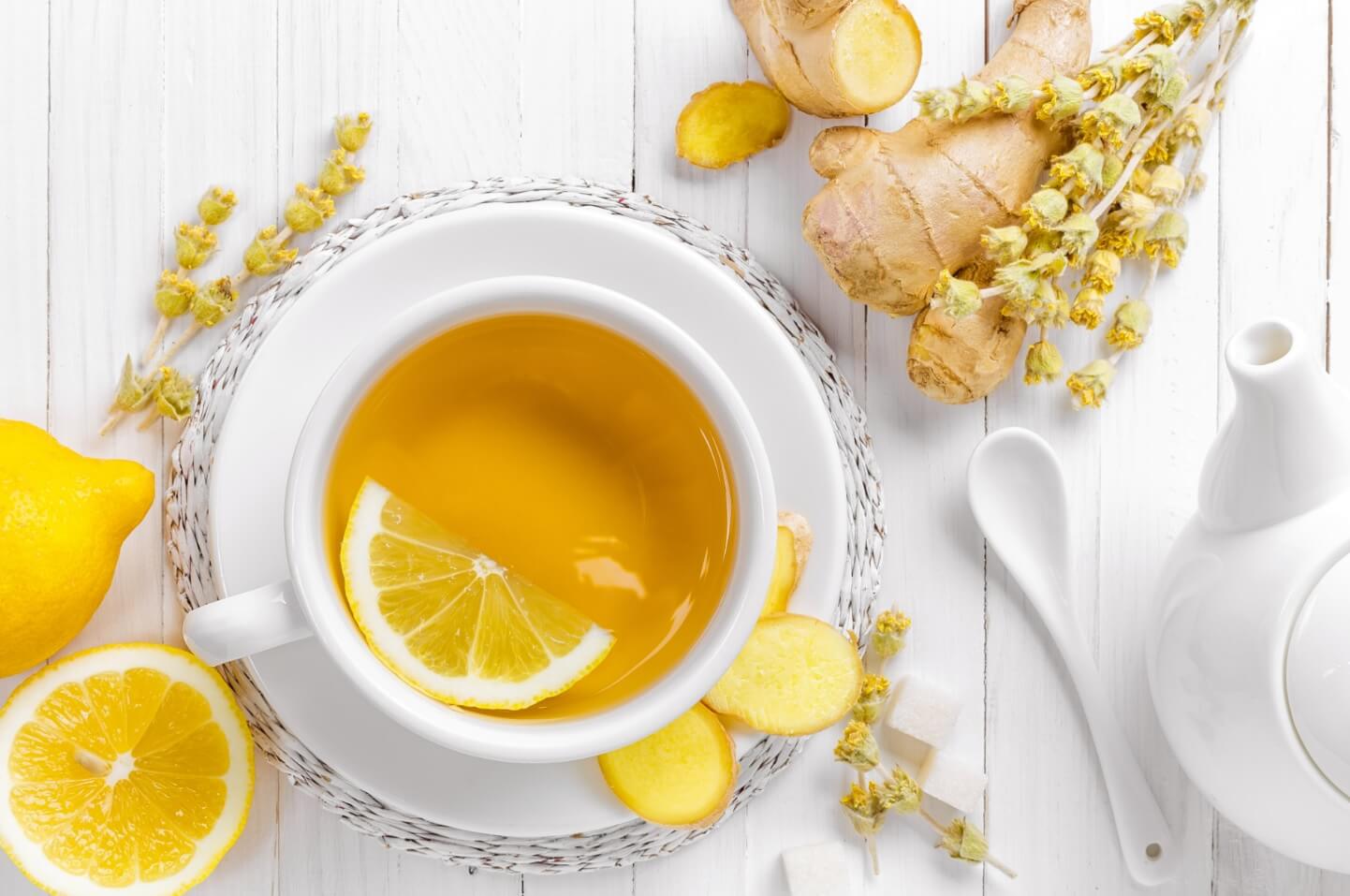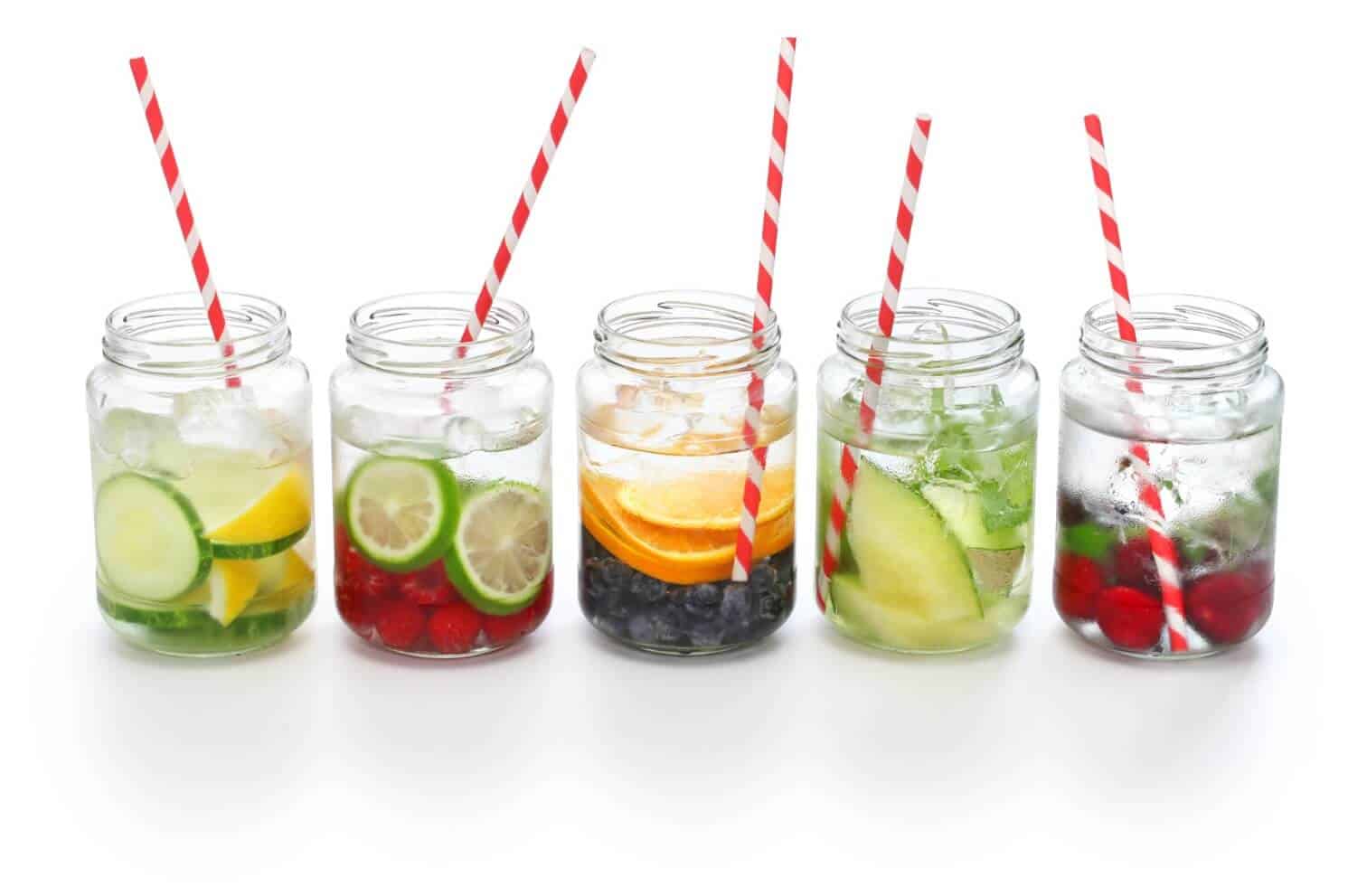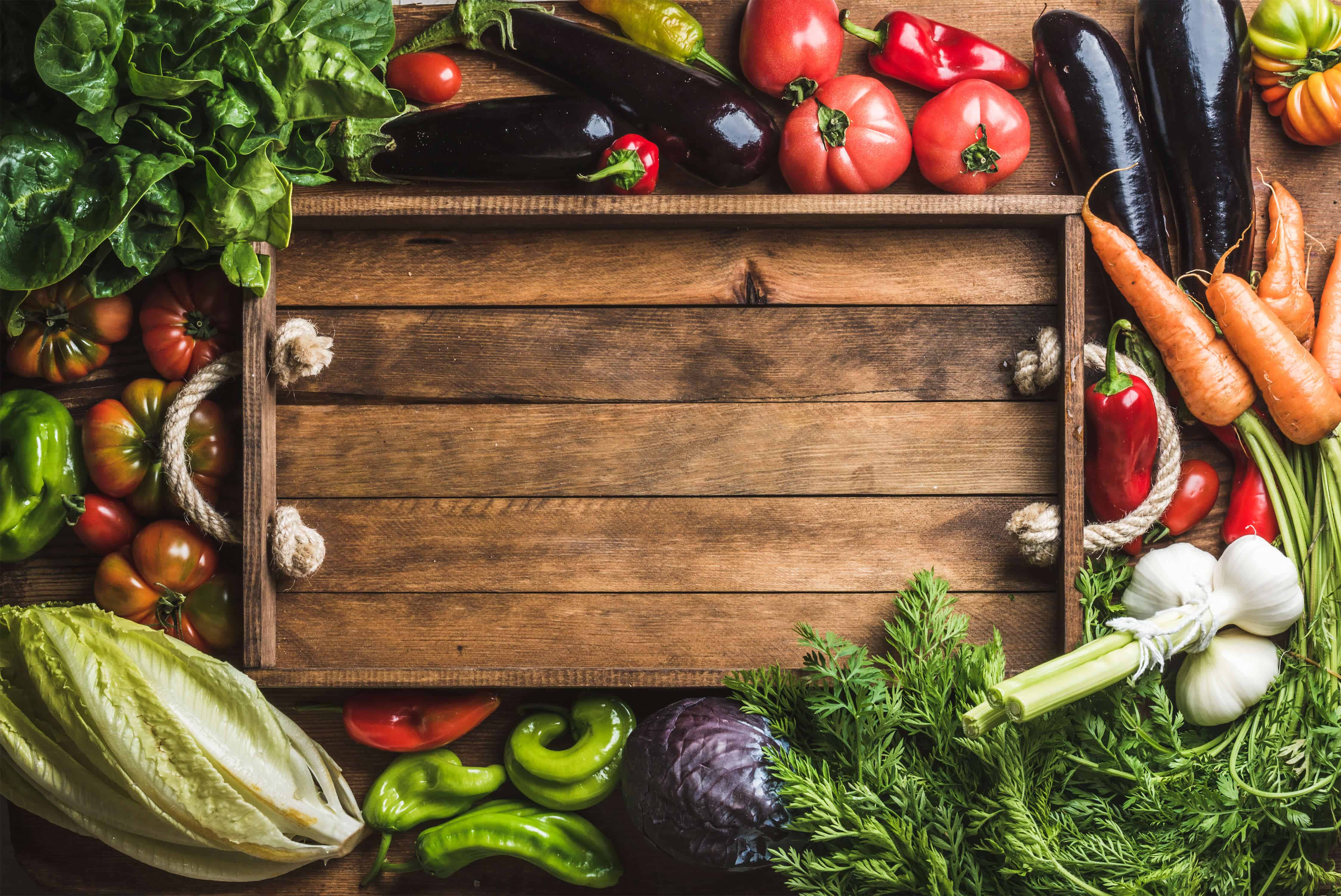The first time I tried a cleanse wasn’t a good experience. It was a short one – 3 days of mostly juicing and smoothies. I did it because I was curious about how I’d feel, but didn’t look into it too deeply. I didn’t decide why I wanted to do it, or the best cleanse for me.
Needless to say, it wasn’t a success. I gave up after a day of drinking awful tasting smoothies. I love veggies and fruit too, just not all mushed together. Had I given it some more thought, decided WHY I wanted to do a short cleanse, and then looked into the best options for me, I likely would’ve been more successful.
If you’re thinking of doing a cleanse, here’s some data that might be useful so your cleanse can be a success for you!
What is a Cleanse?
A cleanse (also known as a detoxification) is a way of clearing the body of toxins we ingest from foods and our environment. Cleanses have been around a long time, even dating back to some biblical traditions which included fasting.
Fasting and detoxing have been performed in many religious rituals dating back centuries. In both eastern and western parts of the world (Greece, Egypt, and China to name a few) there are traditions and religious rituals that include some form of detoxification to rid the body of harmful substances.
It doesn’t matter what part of the world you look at, most cultures have used things like herbs, fruits, and vegetables (all which have characteristics that remove chemicals and toxins from the body) as part of cleansing processes.
Cleanses aren’t about starving yourself but about purifying the body to rid it of harmful chemicals and toxins. The purpose is to help you maintain a healthy lifestyle.
When following a cleanse, you still need to track your intake of liquids, whether a water or juice fast. Take an app like Noom with you on your cleanse journey.
Cleanse Ingredients
Many natural ingredients can be used to support a cleanse, and you will often see most, if not all, of these ingredients when you do a “detox-diet” cleanse, like a raw diet or an organic/non-processed, plant-based diet.
Green tea
Caffeine in green tea works as a diuretic, while antioxidants fight cellular damage. (Journal of Human Nutrition and Dietetics)
Leafy greens (kale, spinach, broccoli)
Packed with fiber to help naturally eliminate waste. (USDA Agricultural Research Service)
Greens are also a good source of antioxidants. Antioxidants fight free radical damage that can be associated with toxins. (Nutrition Journal)
Water (hot or cold)
Proper hydration helps in detoxification. (Nutrition Review)
Prebiotics and Probiotics
Inadequate diet damages the healthy bacteria responsible for digestion in the intestinal tract. (Maturitas)
Yogurt (fermented milk) is an excellent source of prebiotics and probiotics. (British Journal of Nutrition)
High-Fiber Fruits
Natural fiber from fruits like apples works to relieve constipation by helping waste bulk up and pass out of the intestine. (Nutrients)
Ginger
It offers potent antioxidant properties to help heal cellular damage. (Herbal Medicine: Biomolecular and Clinical Aspects)
Are Cleanses Safe?
This all depends on which cleanse you choose, how long you stay on it, and your body. Cleanses are not meant to be long-term. If you stay on certain cleanses for too long, it can become unsafe because you will deprive your body of key nutrients.
There are certain individuals who should not do a cleanse:
- Pregnant and nursing women
- Those recovering from illness or surgery
- Those who are training for athletic events
- Anyone who is under a doctor’s care for a long-term illness
If you are concerned whether a cleanse is safe for you, consult with your family doctor about the specific cleanse and length of the cleanse you’re considering.
Following a cleanse means making some pretty big changes to your diet. A weight-loss and lifestyle app like Noom making tracking your intake easy.
Cleanse Side Effects
Cleanses have side effects, which mostly arise when you’re doing a water fast or juice cleanse. Here are some of the most common side effects:
- Bad breath
- Constipation
- Flu-like feeling
- Fatigue
- Headaches
- Hunger
- Irritability
- Itchy skin
- Nausea
- Body odor
- Difficulty sleeping
These symptoms can occur for a number of reasons.
First, eliminating most food and detoxing from processed foods can cause reactions similar caffeine withdrawal or withdrawal from other addictive substances. Eliminating these substances can cause a brief, flu-like achy symptoms that may last a few days.
The body is always removing toxins; it’s a built-in detox system. Digestive upset on a cleanse is more likely due to an increase of fruits and vegetables due to their fiber and phytonutrients.
Headaches, aches and pains, fatigue and brain fog are usually due to withdrawal from sugar, caffeine, etc and low calorie intake.
Remember staying on a cleanse too long is not healthy or necessary. You don’t want your body to go into starvation mode, so it’s important to do your research on the specific cleanse you choose, and follow the guidelines.
Also, pay attention to your body. It knows what you need and will let you know when it’s time to return to a normal (healthy) diet. “There is a balance when it comes to self care. The body doesn’t lie. It tells you daily what it needs. Each day we adjust to what the body requires. What felt good yesterday may not work today.” states Mandy Ingber, New York Times Best-Selling Author, Creator of the Yogalosophy, Celebrity Fitness and Wellness Expert.
Should You Cleanse Your Body?
There is not a “one size fits all” answer to whether or not you should cleanse. If you are a mostly healthy eater, eat lots of fruits and vegetables, and don’t put a lot of alcohol or processed food in your body, you probably don’t need to do a cleanse.
If you’ve always wanted to try a cleanse, start with a short one and go from there. I wouldn’t recommend jumping into a 14-day juice fast if you’ve never done a cleanse before.
Start with three-days. Start with a raw-diet or a three-day refresh diet. See how that makes you feel and then maybe try a seven-day juice fast next time. And, pay attention to your body because it knows what you need and is always communicating with you. You just have to listen!
Types of Cleanses
Although we mostly hear about physical cleanses, I believe both physical and mental/emotional cleanses are important to keep us at optimal overall health. Although this article focuses mostly on physical cleanses, I also include some brief information at the end on mental/emotional cleanses.
First, let’s review some of the most popular physical cleanses.
Before starting a physical cleanse, setup a journal to track liquid (and food if allowed on the cleanse) intake so you know you’re getting enough nutrition to stay healthy. Noom is the ideal journal – the app is fast, portable, and easy to use.
Juice Fasting Cleanse
A juice fast is done by extracting juice from fresh vegetables and fruit and drinking those juices. This is your food source for the length of your cleanse.
You can do a juice fast by purchasing your fruits and vegetables and using a juicer to extract the juice, or you can purchase fresh pre-packaged juices from a variety of companies which offer 3, 7, 14, or 21 day juicing plans.
Be sure to check your ingredients and know what you’re consuming. Remember the purpose of cleanses is to rid your body of harmful chemicals and toxins, so you want to be sure your pre-packaged juices are all natural.
Juicing is a gentler way to fast than a strict water fast, which is when you eliminate all but water from your diet.
Whether juice or water fast, some feel ill effects. This usually happens by day three of the fast. This can be seen as a con to this cleanse.
Water Fasting Cleanse
Juice and water fasting are considered more “hard core” ways to naturally cleanse your body, especially if you’ve never done one before.
Some of the pros to these types of cleanses:
- Rid the body of toxins
- Lose weight
Some additional cons to consider:
- Some of the side effects
- Impact your hair and skin
The lower calorie content can slow your metabolism if you’re on the cleanse for too long.
Your body may think it’s in starvation mode, which will slow your metabolism as a way to conserve energy. Maintaining your blood sugar can be difficult due to the limited caloric intake.
If you haven’t done a cleanse before, you may want to start with a less harsh option before trying a juice or water fast.
Stimulant and Non-Stimulant Cleanse
Non-stimulant cleanses are those that were just mentioned above. They are all-natural ways of cleansing your system versus using stimulants (like enemas) to force-cleanse your colon.
Because non-stimulant cleanses are natural and do work, this is often the recommended way to do a cleanse as they don’t create any unnecessary stress on your colon. If you choose to use a stimulant for cleansing, the American Academy of Family Physicians advises not using them for more than a few days.
3 Day Cleanse – 7 Day Cleanse – 14 Day Cleanse – 30 Day Cleanse
This answer depends on what you desire to get out of your cleanse. Why are you doing it? Some people do cleanses because they have physical symptoms they want to eliminate (headaches, fatigue, low energy – all which may be the result of toxins in your body.)
Some people just want to kick-start themselves into healthy eating. When you have your “why” behind the cleanse, you can determine what length of time is best for you.
14 Day Cleanse
The longer you do it, the more your body will adjust. I know people who’ve done 14-21 day cleanses and healed their bodies of certain ailments (like headaches, fatigue, low energy) plus launched themselves into a completely new way of eating (elimination of processed foods, alcohol, and anything else that puts unnecessary stress on the liver.)
This varies by person so it’s always best to start with a short cleanse and see how you feel before launching into a longer-term one.
Three day cleanses often kick start you into a healthier eating lifestyle. Consider it a reset. If you’re doing a juice or water fast the hunger pangs actually start to dissipate after day three at which time you may feel flu-like symptoms, headaches, lethargy and breakouts.
30 Day Cleanse
Beyond 21 days you may experience energy swings. Some days you’ll be highly energetic and other days you’ll feel lethargic. This is also normal. Your body is continuing its cleanse.
When deciding how long you want to do your cleanse, be sure to take into consideration your activity level and whether you will have time and space to deal with your energy swings. You want to honor what your body tells you and not push yourself beyond your physical capabilities.
It’s not something to do during a busy time at work, while traveling, or when you might have highly intense workouts planned. Consider it a healing time.
After your fast, when you’re adding back in those healthy, natural foods, track your nutrients with Noom. The clinically-proven weight-loss app will help you see how nutritious your new, healthy diet really is.
Detox Diet Plan
A detox diet is one of the gentlest type of cleanse and may be all you need to rid your body of toxins and chemicals. By eliminating processed foods from your diet for a certain period of time, you allow your digestive system to ease up on the hard work it has to do with processed and chemical-laden food.
It’s much easier for our bodies to process natural and plant-based foods, so this type of cleanse is one that gives your digestive system a break. It’s not as intense as a water or juice fast but can provide your digestive system with a much-needed refresh.
Clean Eating Cleanse
There are many fresh/organic/vegan/vegetarian types of detox diets to choose from, which include food lists and recipes. Most require you to purchase your food and eat specifically from a “clean-eating” food list for a period of time (usually 3, 7, or 21 days.)
My husband did a “raw diet” for about a month a few years ago. This is another type of detox diet and is exactly what it says it is – you eat “raw” food (or food that is not cooked above 118 degrees, above which temperature it begins to lose nutritional value due to high heat.)
Plant-Based Diets
Although my husband consumed a lot of food, it was only raw fruit and veggies, seeds and nuts. He drank only water (usually lemon water), green tea, and fresh juices.
It was completely raw and plant-based and resulted in him having a ton more energy and feeling “lighter” – although he leaned out, that wasn’t what made him feel lighter.
The “lightness” came from his body not having to work extra hard to process unnatural foods though his digestive tract. That was a definite pro.
Some of the cons to a raw diet and also the types of refresh diets mentioned above is they can be time consuming. They take a lot of planning and meal prep.
For raw diets, there is often a lot of volume of food for each meal to ensure you’re getting enough calories for your activity level.
These diets also require shopping at organic and/or locally grown markets to ensure the food you’re getting doesn’t contain harmful toxins. This too can be time consuming and is often why many people choose juice fasting or water fasting instead; however, I encourage this type of diet as a starter if you’ve never done a cleanse before.
“One way to gain deeper insight and greater access to the ingredient supply chain is to source domestically. In fact, there are several benefits to sourcing domestically that go beyond fossil fuel reduction and transparency. There are health benefits to consuming what grows in our regions – from preventing allergies to increased nutritional value with freshness. And when you source locally, you’re supporting more jobs within your community, promoting small business, and assisting small farmers; keeping things local also makes it a lot easier to create win-wins for companies and consumers since you’re often able to be more flexible and creative in your collaborations!” states Abianne Miller Falla, Co-Founder of CatSpring Yaupon.
Stopping a Detox Diet
Regardless of how long your cleanse is, remember to go back to “regular” eating gradually and slowly. You’ve cleaned out your system so the first day back, I wouldn’t suggest a huge steak and a bottle of wine.
That will NOT feel good!
Add a little of each food group back in over the course of a few days (or longer, if you’ve been on a longer cleanse.) Listen to your body – it will let you know what it wants and needs.
“We’ve been conditioned to listen to experts and advice outside of ourselves. The reality is, there is no one way to eat. What works best for us is dependent on our own preferences, metabolism, genetic makeup, environment, and tastes. Each body has different needs and only we can decide what works best for us. We’ve been taught to put our trust in someone else: a book, a weight loss program, a diet expert, a nutritionist, etc. It’s time to let go of what others tell us is the “right” way to eat, and look instead at exploring what our own bodies need!” states Jenn Hand, Food Coach, Blogger, Speaker, Retreat Leader at Jenn Hand, LLC.
Vitamin and nutrient intake, along with other nutritional factors, are critical to watch as you ease back into a natural, whole-food diet. Noom offers an extensive food database managed by nutritionists, so you know the information is current and accurate.
Total Body Cleanse
Doing a physical cleanse may be one way to eliminate toxins from our bodies but what about those toxins that plague our minds and hearts?
How do we eliminate those from our lives? There are a few ways you can do this and clear your mind, heart, and energy field of the negativity that can so easily plague us today.
Mental and Emotional Cleanse
I first heard this term in Danielle LaPorte’s book, White Hot Truth. We live in a noisy world where it’s easy to take on other people’s opinions and advice as our own. It’s also easy to hear other peoples’ opinions so loudly that they overpower what is true for us as individuals.
I’ve fallen prey to this throughout my life and relied on others’ input to a fault. I decided to go on an input fast to clear myself of others’ opinions and advice. This meant all decisions and answers that were best for me could come from the only source that truly knows what’s best for me – ME! How did I do this?
First, I cut off asking for others’ advice and opinions.
Yes, I still talked to my family and friends. I still read and listened to podcasts. But, I didn’t ask anyone for their opinion or advice about my decisions and choices. I didn’t have conversations about what I was doing or trying to decide to do. Those conversations are between me and me only. It’s not that I don’t respect others’ wisdom and guidance. I was just abstaining from it for a while.
Second, I created space and silence to hear myself.
Our world is noisy. If it’s not chatter from the TV, social media, Siri, text messages, or phone calls, it’s often noisy in our minds. I created daily time to simply be quiet and still. Although I do meditate, this wasn’t meditation time.
It was time to sit at my pond or be out in nature where the only sounds were those of mother earth. It wasn’t even a lot of time… maybe 15-20 minutes per day. It’s in this quiet space that you can ask yourself for guidance.
You can ask yourself the same questions you’d ask coaches, friends, psychics, or mentors. If the answers don’t arise right away, they will eventually. They might show up when you’re asleep, when you’re in the shower, or when you’re taking time to be quiet the next day. They will come because you’ve created space for them to. Trust in that.
“Ground yourself. You cannot be fully present in your life if you are only in your head. It is important to be connected to your body and your spirit to gain full access to your power.” states Barbara Biziou, Transformation Vision Coach, Global ritual expert and Urban Priestess.
Social media hiatus
I don’t think this one needs a lot of explanation. Take a break from the constant flood of social media feeds. There is so much noise, negativity, and hiding (in a not-so-good way) on social media that it can create agitation in our hearts and minds without us even knowing where it’s coming from!
If you don’t want to go on a hiatus, try cleansing your feed of negative stories, people, and posts. Follow inspirational sites and pages. Don’t overdose on the news. Yes, it’s important to be informed, but it’s not necessary to be informed 24/7.
Off the grid / disconnect time
This is all about disconnecting from your electronic devices. Get out in nature away and be off the grid. Go someplace where there’s no cell service or Wi-Fi for 24 hours. Heck, go for 2 hours! I promise, you’ll survive, and so will anyone trying to reach you! It is amazing what you reconnect with when you disconnect from electronics.
These are just a few of my favorite ways to give yourself a mental and emotional cleanse. I take off-the-grid time at least once a week, to keep my mind and heart constantly open and cleansed. Do whatever you can whenever you can to eliminate negativity from your mind and heart.
Having a healthy mental and emotional state and keeping your mind and heart clear from toxins is just as important as doing it for your physical body.

Andria Corso is an award-winning Life and Leadership Coach and fitness expert with 20 years’ experience working with clients to create success in all areas of their life. full bio









